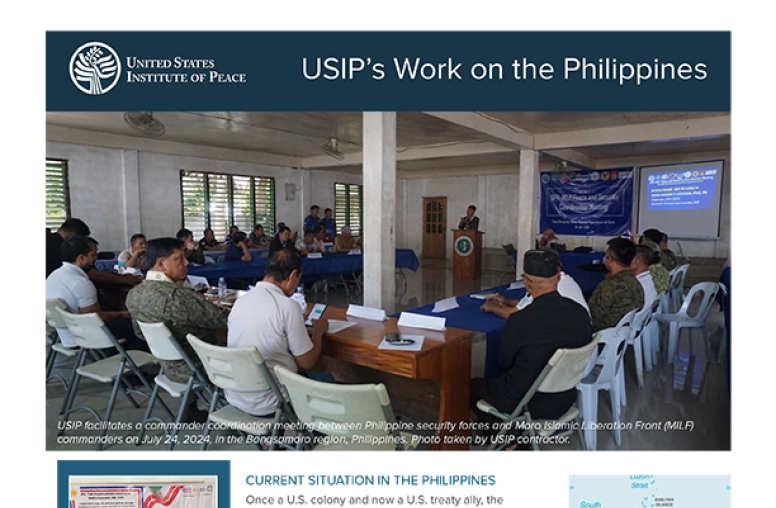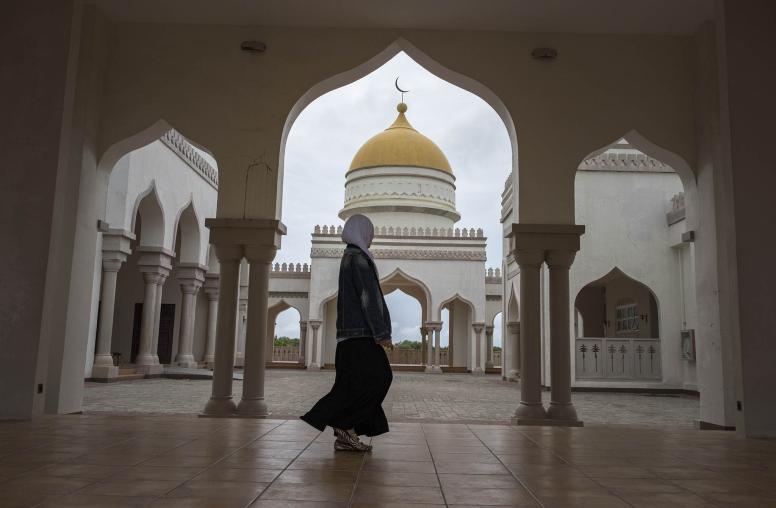The Cascading Risks of a Resurgent Islamic State in the Philippines
Militants are seeking to disrupt the delicate peace process in the Bangsamoro autonomous region.
On December 3, militants placed a bomb amongst parishioners gathered for Catholic Mass on the floor of the Mindanao State University (MSU) gym in Marawi City. Minutes later, it detonated killing four and injuring dozens. The Islamic State (ISIS) claimed that its East Asia affiliate was responsible for the attack. After a year of heavy losses, many had hoped that the threat posed by pro-ISIS groups was dissipating. Unfortunately, the violence that has characterized the six weeks since the bombing suggests that the Islamic State East Asia (ISEA) is attempting a resurgence timed for a critical 16-month period for the Philippines. The stakes are very high.

Pro-ISIS groups are engaged in a last-ditch struggle to disrupt the Bangsamoro peace process before the autonomous region’s first elections in May 2025. If peace in the Bangsamoro falters and conflict breaks out, it will trigger cascading risks with significant repercussions for both Philippine and regional stability. The return of unrest in the south would require Manila to redeploy its military for internal security operations and abandon an intended repositioning of its armed forces for territorial defense. This would severely compromise the ability of the Philippines to focus on Chinese aggression in the West Philippine Sea and jeopardize its closer security ties with key partners like the United States and Japan. Efforts to mitigate these risks must be informed by a nuanced understanding of both the evolving ISEA Philippines threat and the far-reaching implications if peace spoilers succeed in the Bangsamoro.
Vulnerable and Lashing Out
Mostly operating in the territories of the recently established Bangsamoro Autonomous Region of Muslim Mindanao (BARMM), pro-ISIS groups have a unique opportunity to act as a spoiler of the Bangsamoro peace process. However, these groups suffer from critical vulnerabilities. Two are particularly significant. First, there is no single ISEA-Philippines with a unified leadership structure or overarching strategic and operational coordination. ISEA Philippines is best understood as a variety of loosely connected groups — from the Dawlah Islamiyah (DI) in Lanao del Sur and factions of the Bangsamoro Islamic Freedom Fighters (BIFF) in Maguindanao to Abu Sayyaf factions in the Sulu Archipelago and other smaller groups — that have typically focused on a certain geographic area with members mostly recruited from the dominant local ethnic group. This has tended to be an obstacle for a more coherent and focused campaign.
Second, pro-ISIS groups have been under intense pressure particularly in the last 12 months. Counterterrorism operations have killed key leaders, most notably ISEA’s emir, Faharudin Hadji Satar (aka Abu Zacharia), who was killed in Marawi City in June 2023. A variety of programs designed to attract defectors and reintegrate them back into their communities have also sapped the ranks of dozens of fighters and supporters. The greatest impact on reducing the appeal of violent peace spoilers has arguably been the success of the Bangsamoro Transition Authority (BTA) to deliver on governance and development promises, the Philippines government’s championing of the peace process and the tireless work of local grassroots peacebuilders. This context is crucial for understanding the significance of the Marawi City attack and its potential implications.
Tipping the Balance to Chaos
Under intense pressure yet also faced with an historic opportunity to turn the tables on its rivals, ISEA’s choice of target and location for the December 3 bombing is significant. In May 2017, pro-ISIS militants attacked Marawi City, and during the five-month siege the MSU campus was never breached. It was not only a physical sanctuary but a symbol of hope and diversity. The December 3 attack sought to shatter all of that and inspire a violent resurgence. This is certainly how a relatively new, local pro-ISIS media unit framed the attack. Playing on nostalgia and “responsibility to protect” narratives, its messaging lamented the loss of Marawi and called for locals to rise up. In recent weeks, to appeal to new recruits its messaging has included photo reports depicting the daily lives of ISEA fighters.
The evolution of the ISEA Philippines threat since the 2017 Marawi siege reveals some worrying signs. For instance, it appears that pro-ISIS groups may be coordinating more than previously thought. Although unverified, the emergence of what appears to be a dedicated local media unit that seems to be feeding content to ISIS’ central media unit hints at a potentially more sophisticated propaganda approach. In contrast to 2017, ISEA’s current generation also appears to have adopted a more patient approach with someone identified as the new ISEA spokesman, so far unverified, recently referring to their struggle as a “long jihad.”
In the BARMM’s most vulnerable communities, the sense that peace dividends have not delivered as expected has provided local recruiters with a powerful lever. Former guerrillas are especially vulnerable to the politics of dashed expectations, and pro-ISIS groups are desperate to coax them into their ranks. For ISEA Philippines, the bar for success is remarkably low: spoil the peace process and fuel chaos. If they succeed, the repercussions are huge.
Toppling the Dominoes
Published within days of the Marawi City attack, an editorial in ISIS’ an-Naba publication declared that, “strategically, the Philippines is not just an island located in the far east of the world; rather, it is an area of the global conflict that is still drawing closer day after day between the tyrants of China and America.” ISIS and its local affiliate see their struggle against peace efforts in the southern Philippines as equally an opportunity “to confront the projects of the tyrants.” The reality is that ISEA Philippines does not have the capability to singlehandedly collapse the Bangsamoro peace process, let alone implement an alternative government. But it could act as a major catalyst for the outbreak of conflict and instability.
The most promising opportunity for lasting peace in the Bangsamoro and countering China’s aggression in the West Philippines Sea are the two primary drivers of Manila’s intent to pivot its armed forces from internal security operations to territorial defense. Such repositioning is an enormous undertaking and, to support those efforts, the Philippines has looked to double down on its alliance with the United States and put new energy into emerging defense relationships with Japan and Australia. Any stalling or abandoning of its intended repositioning risks undermining the ability of the Philippines to defend itself, which includes being able to make meaningful contributions to these defense partnerships. The predicament facing the Philippines is simple: secure peace in the south or be forced to confront simultaneous threats on internal and external fronts.
Tipping the Balance to a Lasting Peace
The key to managing cascading risks is preventing the toppling of that triggering domino. The United States can play a significant role in helping to maintain peace in the Bangsamoro. Satisfying the requirements of the political/legal and normalization tracks of the peace process, especially the reintegration of former combatants, will be essential. So too will be ensuring that vulnerable communities are prioritized during the remaining months of the transition period. While much of this work is well on its way to completion, gaps remain that the United States could address through targeted, high-impact but relatively low-cost initiatives. It is this combination of top-down political solutions and bottom-up grassroots local peacebuilding that will be crucial for achieving a lasting peace and drying out the pool of recruits to violent peace spoilers like ISEA.



